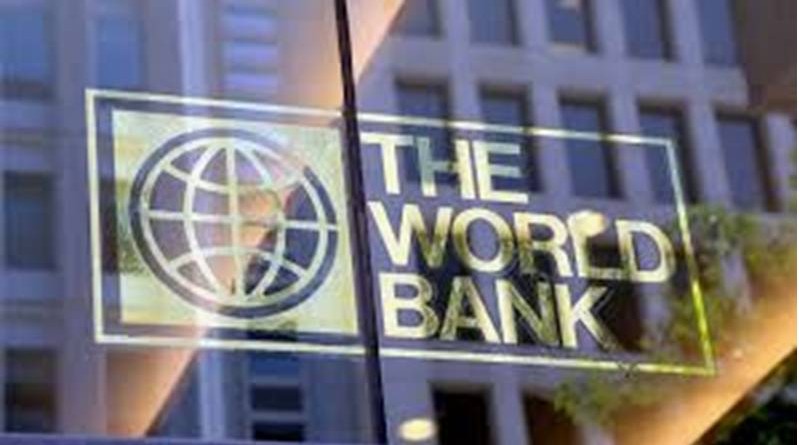High interest rates is a risk to global growth especially in emerging markets and developing countries – World Bank
According to the World Bank’s most recent Global Economic Prospects report, global growth has severely slowed and the risk of financial stress in emerging market and developing countries (EMDEs) is growing amid high global interest rates.
According to projections, global growth would slow from 3.1% in 2022 to 2.1% in 2023. The growth rate in EMDEs outside of China is forecast to drop from 4.1% last year to 2.9% this year. These expectations represent widespread downgrades: growth projections for nearly all advanced economies and seventy percent of EMDEs have both been revised downward.
Employment is the most reliable means to end poverty and promote prosperity, and slower development makes it far more difficult to create jobs, according to World Bank Group President Ajay Banga. “It’s critical to remember that growth projections are not a guarantee. We have a chance to change the course of events, but cooperation from everyone is necessary.
The majority of EMDEs have so far only experienced minor harm as a result of the current banking stress in advanced economies, but they are now in perilous seas. One out of every four EMDEs has essentially lost access to foreign bond markets due to tightening lending conditions globally. For EMDEs with inherent vulnerabilities like poor creditworthiness, the squeeze is more severe. These economies are expected to grow by less than half as much in 2023 as they did a year ago, putting them extremely exposed to future shocks.
Indermit Gill, Senior Vice President and Chief Economist of the World Bank Group, declared that the state of the global economy was precarious. It is far from the dynamism required to end poverty, combat climate change, and restock human capital outside of East and South Asia. Trade will expand in 2023 at a rate that is less than a third of what it was in the years prior to the epidemic. Due to increased interest rates, debt pressures are intensifying in emerging markets and developing countries. Many low-income nations are already in debt crisis as a result of fiscal inadequacies. Even the most optimistic predictions of private investment fall well short of the finance requirements to accomplish the sustainable development goals.
According to the most recent predictions, EMDE progress has been permanently hampered by the concomitant shocks of the pandemic, the Russian invasion of Ukraine, and the abrupt halt amid challenging global financial conditions. This setback is expected to last for the foreseeable future. Economic activity in these economies is anticipated to be around 5% below levels predicted on the eve of the pandemic by the end of 2024. The harm is severe in low-income nations, especially the poorest ones, where more than one-third of them will still have below-2019 per capita income levels in 2024. Extreme poverty will continue to develop in many low-income countries at this slow rate of economic growth.
Many emerging nations are having a difficult time coping with chronically high inflation, slow development, and record debt levels. However, additional dangers—such as the potential for wider ripple effects from advanced economies experiencing new financial stress—could make things even worse for them, according to Ayhan Kose, deputy chief economist of the World Bank Group. To prevent financial contagion and lessen short-term domestic risks, policymakers in these economies should take immediate action.
According to the analysis, growth in advanced economies would slow from 2.6% in 2022 to 0.7% this year and continue to be poor in 2024. The U.S. economy is anticipated to slow to 0.8% growth in 2024 from 1.1% growth in 2023, primarily as a result of the aftereffects of the recent steep increase in interest rates. Due to the delayed impact of tightening monetary policy and rising energy prices, GDP in the euro area is predicted to drop to 0.4% in 2023 from 3.5% in 2022.
The paper also examines the impact that rising U.S. interest rates are having on EMDEs. Investor expectations of aggressive U.S. monetary policy to control inflation have been a major driver of the rise in two-year Treasury rates during the past 18 months. The paper claims that this specific kind of interest rate hikes is linked to negative financial repercussions in EMDEs, including a greater likelihood of financial disaster.
Additionally, in nations that are more economically vulnerable, these effects are more noticeable. Frontier markets in particular—those with less developed financial markets and less access to foreign capital—tend to see disproportionately large rises in borrowing costs. For instance, sovereign risk spreads in frontier markets typically increase by more than three times as much as they do in developed markets.
The paper also offers a thorough analysis of the fiscal policy issues low-income economies must deal with. These nations are in a terrible situation. Over the past ten years, their fiscal conditions have been worse, and this is made worse by rising interest rates. Currently, public debt is on par with 70% of GDP. A growing portion of the government’s meager revenue is being devoured by interest payments. 14 low-income nations are already experiencing or are very susceptible to debt hardship. In these economies, there are more constraints on spending. Due to the lack of social safety nets in low-income nations, adverse shocks like conflict and extreme weather conditions are more likely to cause household hardship than anyplace else. These nations spend just 3% of GDP on their most disadvantaged residents, which is far less than the average of 26% for all countries. The full report can be accessed here




